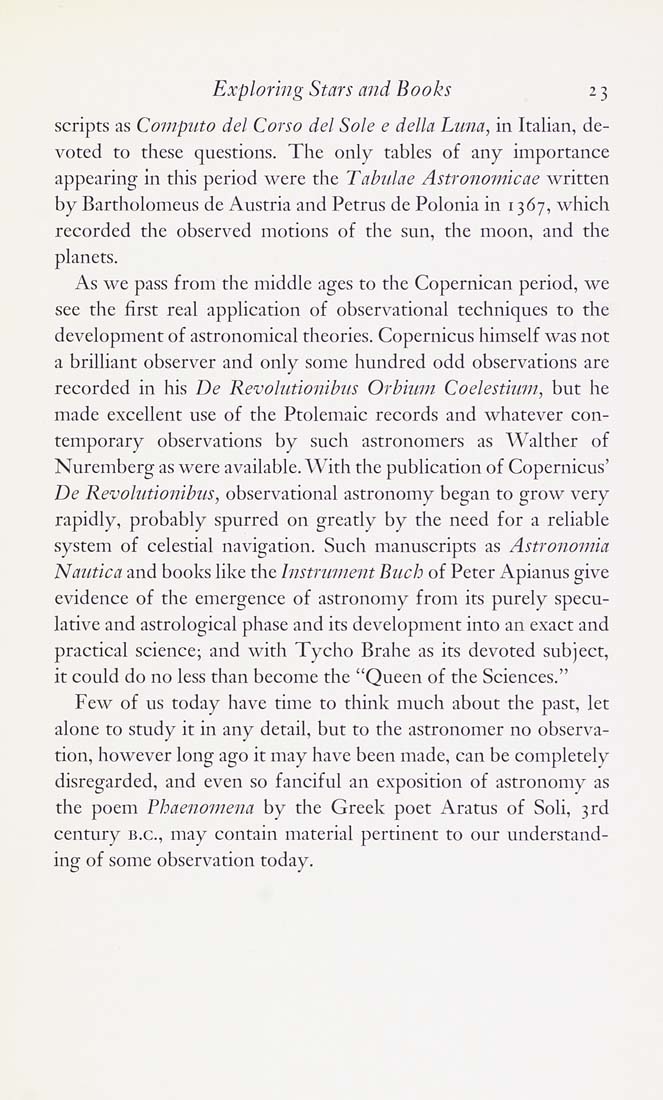Columbia Library columns (v.9(1959Nov-1960May))
(New York : Friends of the Columbia Libraries. )
|
||
|
|
|
|
| v.9,no.1(1959:Nov): Page 23 |

Exploring Stars and Books 2 3 scripts as Compiito del Corso del Sole e della Luna, in Italian, de¬ voted to these questions. The only tables of any importance appearing in this period were the Tabulae Astronomicae written by Bartholomeus de Austria and Petrus de Polonia in 1367, which recorded the observed motions of the sun, the moon, and the planets. As we pass from the middle ages to the Copernican period, we see the first real application of observational techniques to the development of astronomical theories. Copernicus himself was not a brilliant observer and only some hundred odd observations are recorded in his De Revohttionibus Orbium Coelestium, but he made excellent use of the Ptolemaic records and whatever con¬ temporary observations by such astronomers as Walther of Nuremberg as were available. With the publication of Copernicus' De Revolutionibiis, observational astronomy began to grow very rapidly, probably spurred on greatly by the need for a reliable system of celestial navigation. Such manuscripts as Astrono7nia Nautica and books like the Instrument Buch of Peter Apianus give evidence of the emergence of astronomy from its purely specu¬ lative and astrological phase and its development into an exact and practical science; and with Tycho Brahe as its devoted subject, it could do no less than become the "Queen of the Sciences." Few of us today have time to think much about the past, let alone to study it in any detail, but to the astronomer no observa¬ tion, however long ago it may have been made, can be completely disregarded, and even so fanciful an exposition of astronomy as the poem Phaenomena by the Greek poet Aratus of Soli, 3rd century B.C., may contain material pertinent to our understand¬ ing of some observation today. |
| v.9,no.1(1959:Nov): Page 23 |







